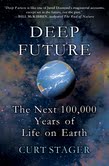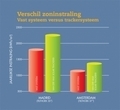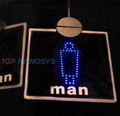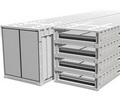Designersblock Hits the London Design Festival With Fantastic Eco-Designs in Unexpected Forms
by: Inhabitat , 2011-09-23 23:29:10 UTC





















Read the rest of
Designersblock Hits the London Design Festival With Fantastic Eco-Designs in Unexpected Forms
Permalink |
Add to
del.icio.us |
digg
Post tags: "green furniture", Accessories and Fashion, Art, Botanical, Bright Ideas, designersblock, DIY, Green Appliances, Green Design Events, green lighting, green materials, green products, inflatable structures, Korean Design, london design, london design festival 2011, Products, Recycled Materials, Swedish design
IF11 Preview: Dorothea Seebode on Philips' Legacy of Innovation
by: Greener Design, 2011-09-19 11:15:37 UTC
In the runup to GreenBiz Group's Innovation Forum 2011, Dorothea Seebode discusses Philips' 120-year legacy of innovation and how the global giant has built on that reputation despite sweeping changes in technology and consumer expectations.

 What We Can Learn from Solyndra's Failure
What We Can Learn from Solyndra's Failure
by: Greener Design, 2011-09-23 15:43:55 UTC
The inquisition-like 'fact-finding exercise' about green jobs yesterday on Capitol Hill tells us a lot about the state of our political dialogue, but also about the role government should play in subsidizing energy of all kinds.

 DockBoss Lets You Plug Anything Into iPhone Docks
DockBoss Lets You Plug Anything Into iPhone Docks
by: Gadget Lab, 2011-09-22 12:15:21 UTC

The DockBoss puts your Android phone into an Apple dock
Problem: You own an Android phone, but you live in an iPhone world. Every device, from cars through speakers to refrigerators comes with a 30-pin dock connector.
Solution: The DockBoss. This adapter lets you take anything with a 3.5mm jack and hook it up to an iPhone dock, including your Android phone or even your Zune.
Inside the business end — which plugs into the dock itself — is a mess of electronics which are powered by the dock (both USB and ancient FireWire docks are supported). These make sure that the sound is sent properly to the host device, so pretty much anything should work.
And yes, you could even use this to plug your iPhone into Apple’s Universal Dock.
It’s a smart idea marred only by the fact that almost all iPhone-compatible accessory come with a 3.5mm jack socket too. On the other hand, for just $23, the DockBoss means you’re ready for absolutely everything.
DockBoss [Cable Jive]
See Also:
Solar-Powered Water ATMs Provide Clean Drinking Water To The Thirsty
by: fast company, 2011-09-23 19:35:10 UTC
In remote areas where clean water is scarce, Sarvajal's water-dispensing ATMs provide a cheap solution.

Clean water is a luxury; one in eight people around the world lack access to supplies of the stuff, and unsafe water is responsible for 60% to 80% of all disease in India alone. There are plenty of possible solutions--new wells, pricey community water filters--but an organization called Sarvajal has devised a fix that is rapidly spreading across India: solar-powered water ATMs.
Sarvajal was honored this month as a Tech Award Laureate for its franchised water treatment
facilities that leverage local cellular networks to remotely keep track of quality and quantity. "One of the objectives when we first started [in 2008] was to create a market-based mechanism of health care," explains Sameer Kalwani, CTO of Sarvajal. Hence, the solar-powered water ATM, a device that gives customers in rural areas access to clean water any time with the use of a pre-pay card that can be recharged via cellphone.
Here's how the water ATM processed works: local franchisees--people who want to make money as water stewards for their community--are allowed to operate ATMs in their villages. They pre-pay Sarvajal for water, and pick it up to dispense into the ATMs, which treat the water with reverse osmosis and ultraviolet rays. Community members get their pre-pay water balances from the franchisee, who is allowed to keep all cash from home deliveries. If something goes wrong with one of the cell phone network-connected ATMs (i.e. a leak), Sarvajal finds out immediately and fixes it.
Sarvajal's franchisee network is growing fast. So far, there are 120 facilities in India serving 60,000 people for the price of less than $3 per month per family. In remote areas where clean water was impossible to come by before, this is more than just a luxury--it's a potentially life-saving technology.
[Image: Sarvajal]
Reach Ariel Schwartz via Twitter or email.


 P&G to Advocate Coldwater Washing to 100m US Homes
P&G to Advocate Coldwater Washing to 100m US Homes
by: Environmental Leader, 2011-09-23 15:04:57 UTC

Procter & Gamble Company has pledged to launch an information blitz on 100 million U.S. homes aimed at promoting coldwater clothes washing. In partnership with the Alliance to Save Energy, and through its Tide brand and Future Friendly conservation education campaign, P&G wants to provide the households with the information needed to convert from warm [...]
 White Water* Filtration System to utilize grey water
White Water* Filtration System to utilize grey water
by: The Design blog, 2011-09-24 00:15:10 UTC
Jaspreet Kaur Walia:

White Water*White Water* - Greywater filtration system by David Locke
Wasting clean water can lead to its shortage in coming times, which can act as a problem when performing daily chores. Water conservation is the best solution that can keep all water related worries at bay. David Locke has designed the White Water* Filtration System, which is simple and will blend perfectly with everyday life.
Picture Gallery
White Water* - Greywater filtration system by David Locke
The water filtration system is quite different from regular options available in the market. The inverted cone-shaped product can be placed below the bathroom sink and can be nicely concealed in a vanity cupboard. A lot of water is wasted in the bathroom while washing our face, brushing, washing hands, etc. We don’t even think twice before letting this precious liquid go down the drain that how much time and efforts are needed to bring it back to the surface. The filter system has been designed in a way to make the most of grey water. White Water* has been fitted with three sustainable filters that make used water fit for consumption. The system makes the water reusable that can be used for different household purposes. The filters make the water so pure that it can be even used for drinking. Since, it will be placed in a vanity cupboard the sight of ugly pipes and chemical bottles will take a back seat.
It features a tap that has been styled like a beer tap that lets the filtered water to be distributed from the reservoir (when full) to other places by using an electric pump. White Water* Filtration System will help keep water wastage to a minimum, which will also relieve the environment from unwanted stress. The system can be easily wedged in houses. It will help save on water bills and will prove to be a boon for the low income group. The system will allow people to utilize water in an efficient way and will also reduce wastage.
Via: Behance


 Recycled Paper Works Feature at Origin Craft Fair
Recycled Paper Works Feature at Origin Craft Fair
by: TreeHugger Design, 2011-09-23 10:01:44 UTC
 Photo: B. Alter, Tine De Ruysser
Origin: The Contemporary Craft Fair
Photo: B. Alter, Tine De Ruysser
Origin: The Contemporary Craft Fair is the annual juried fair where some of the most sophisticated craftspeople from around the world show their wares.
This year's (unofficial) theme seems to be paper: everyone is using it for pottery, pictures and jewellery. Must be the economy...
...
Read the full story on TreeHugger
Our Favorite Green Designs from Tramshed at the London Design Festival!
by: Inhabitat , 2011-09-22 20:23:12 UTC







Read the rest of
Our Favorite Green Designs from Tramshed at the London Design Festival!
Permalink |
Add to
del.icio.us |
digg
Post tags: contemporary design fair, designers fair, exhibition hall london, london design festival 2011, London Design Week, london design week 2011, london green design, tramshed 2011
Do-It-Yourself Climate Modeling
by: fast company, 2011-09-22 18:33:43 UTC
Climate Wizard lets you see the various climate predictions for where you live. They're not pretty.

If you're curious about what 16 reputable climate models say about the future of your corner of the planet, check out the Climate Wizard, a site that lets you use model simulations individually or as an "'ensemble average" to show how future temperatures and precipitation may change around the world as greenhouse gas concentrations continue to increase. Regardless of what you think about human influences on climate or the ability of such models to simulate them, having such a large number of projections available in one spot allows for some interesting comparison-shopping.
You can select low, moderate, and extreme greenhouse gas emission scenarios to drive the models, focus on specific months or seasons, and zoom in on maps to see what happens in any given nation or state by the 2050s or 2080s AD. Areas that register a past or future warming or drying trend are shaded in yellows, oranges, and reds while cooling or wetting zones are shown in darkening greens and blues. You can also find summaries of historical weather trends since the 1950s, and numerical graphs of the data are also available.

For example, much of the greatest anticipated future warming is in the Arctic, and most models show the southeastern United States and Mediterranean region becoming drier in the future while central Asia and northeastern Africa become wetter.
Before you partake of the Climate Wizard, however, here are some things to keep in mind:
1. Nobody yet knows which of these simulations are the most accurate, so take them with a grain of salt. This is especially important for precipitation, which is devilishly hard to model and yields less consistent results than temperature does.
2. In general, results that encompass large geographical areas and long time scales may be more likely to be correct than small, short-term ones.
3. An ensemble average of all the model outputs is not necessarily more reliable than the output of any single model because an average of the whole bunch may simply obscure the results from most reliable one.
Despite such limitations, these models do a good job of showing how greenhouse gases can affect temperature in general. Compare the results of a moderate (B1) carbon emissions scenario to those of an extreme (A2) scenario and you'll see how heat-trapping gases raise temperatures more and more as carbon dioxide concentrations rise. The model outputs also show that different regions are likely to respond differently while global average temperatures rise, and that precipitation patterns are affected as well.
For more information on Climate Wizard and climate modeling in general, see here and here.
[Image: Flickr user Stuck In Customs, Climate Wizard]
 Curt Stager is an ecologist, paleoclimatologist, and science journalist with a PhD in biology and geology from Duke University. His new book is DEEP FUTURE: The Next 100,000 Years of Life on Earth (St. Martin's Press, March 2011).
Curt Stager is an ecologist, paleoclimatologist, and science journalist with a PhD in biology and geology from Duke University. His new book is DEEP FUTURE: The Next 100,000 Years of Life on Earth (St. Martin's Press, March 2011).













Comments by our Users
Be the first to write a comment for this item.